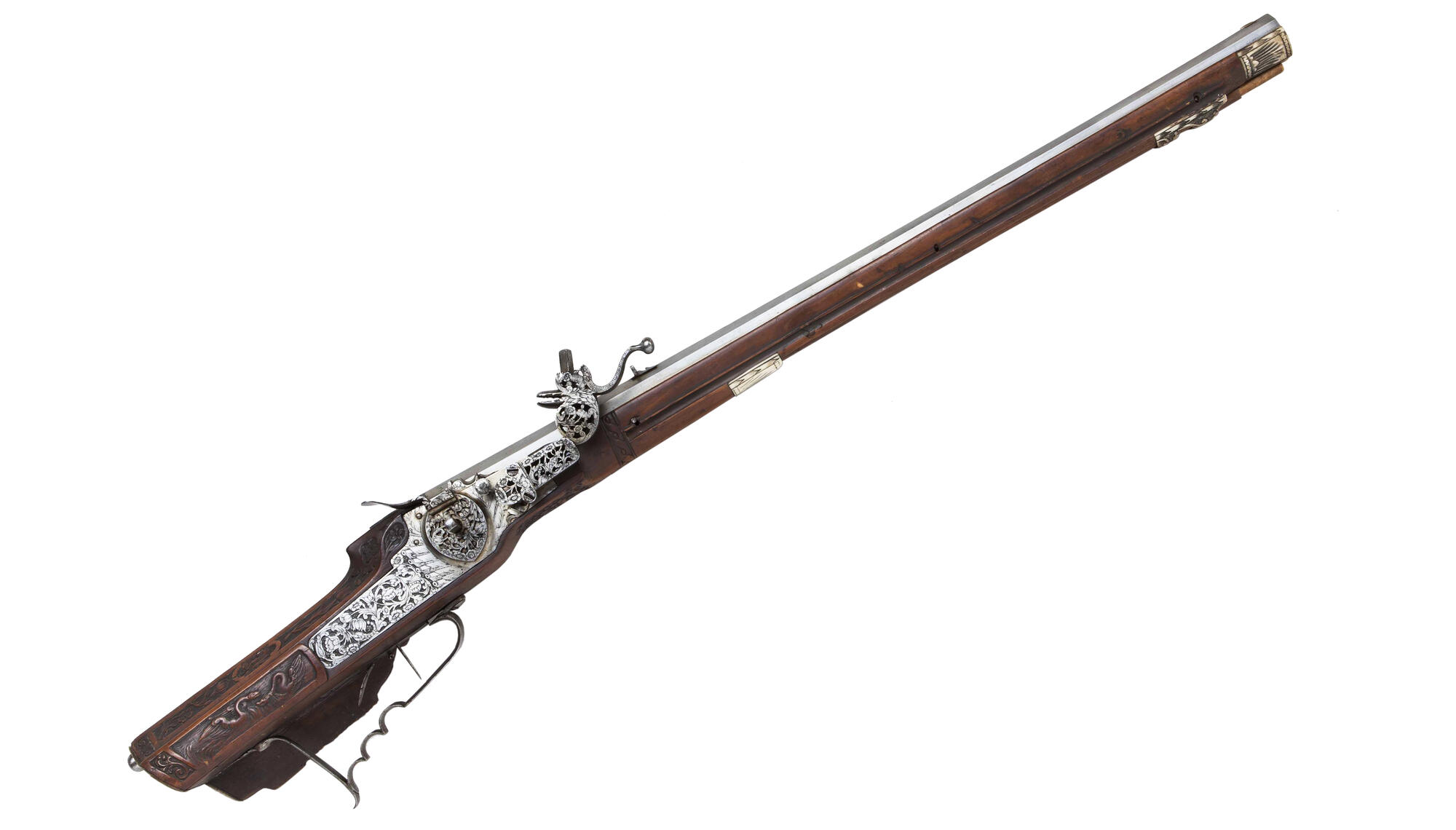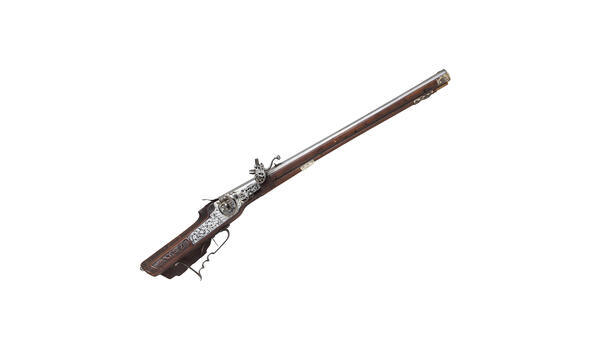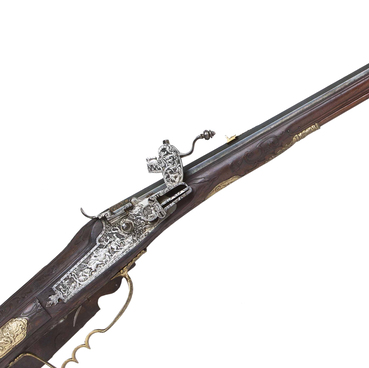The wheellock rifle from the collection of hunting weapons in the Gatchina Palace and Estate Museum was created in the 1660-1670s. It was made by Hans Keiner from the town of Eger (present Cheb), ‘the most German’ town of Czechia, whose gunmakers in the second half of the 17th century developed a distinguished and easily recognizable style of firearms decoration. First of all, it is characterised by deep carvings on the stock as well as by a pattern engraved against a selected background on the lock plate and partly on the barrel.
The lock may have several openwork parts. The most common decoration is a pattern with a floral motif but it may also include complex hunting or other scenes. The high demand for richly decorated weapons from Eger helped to restore the town which had been considerably damaged during the Thirty Years War. However, by the early 18th century the manufacturing of weapons in the town was almost completely abandoned since its citizens had found a new source of profit — mineral water trading. The barrel of the rifle is made of forged iron and is octagonal in section.
The bore has eight semi-circular grooves. The rear sight in the form of a low blade with a tiny notch is made of iron, while the front sight is made of brass. The breech end of the barrel is decorated with engraved flowers and the muzzle face — with a wreath. On the upper plane of the barrel at the breech end there is an inscription: ‘Hans Keiner E’ (or ‘Hans Reiner E’), which indicates the name of the gunmaker — Hans Keiner. The rifle has a wheellock mechanism. The wheel is located on the outside of the lock plate. It is protected by an openwork almond-shaped iron cover decorated with an engraved floral pattern.
On both sides of the wheel the plate is decorated with engraved war trophies. At the left corner of the plate there is a low relief floral pattern in chasing and engraving techniques. The stock is made of nut wood and decorated with deeply carved images depicting foliage along the comb of the buttstock, flowers on its right side and a hunting scene on the cheek piece: a hunter with a rifle shooting at a bear attacked by three dogs. On the opposite side from the lock the stock is decorated with images of a squirrel, a deer and a dog.
The bottom side of the stock in front of the trigger guard has a carved image of a bunch of grapes and the patch box lid is decorated with images of swans. Lock bridles are substituted with two round bone inserts. The cap of the fore-end — the front part of the stock running along the barrel — is made of ivory and decorated with a stylised floral pattern.



